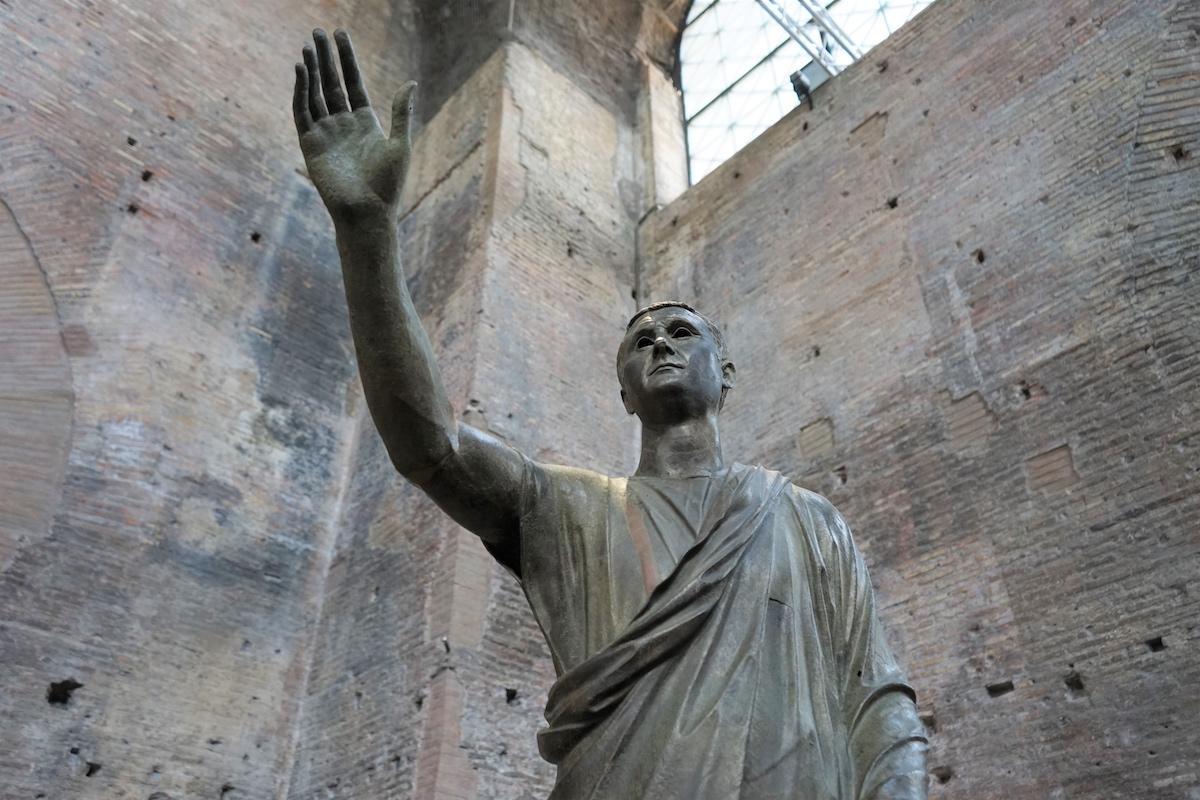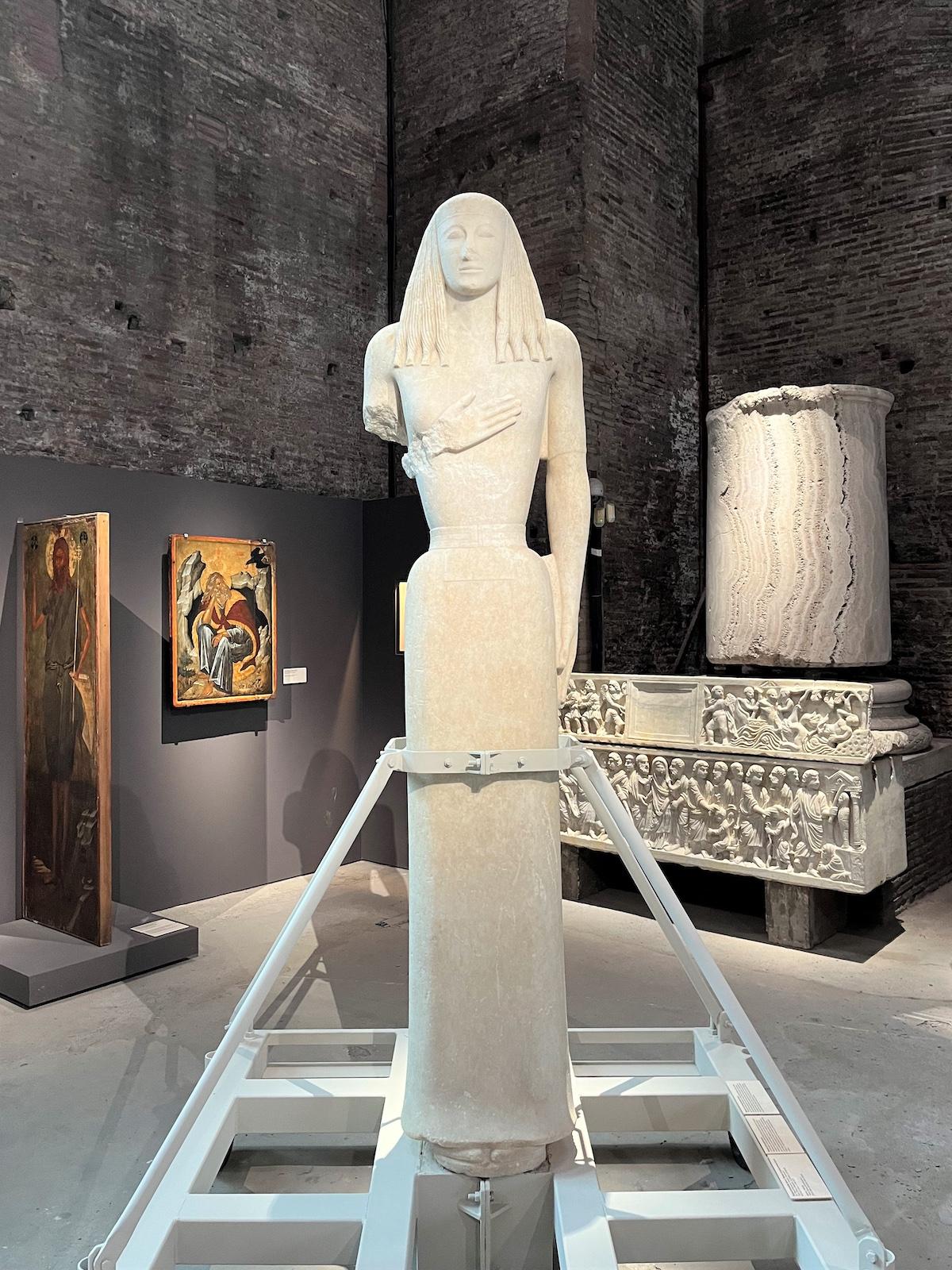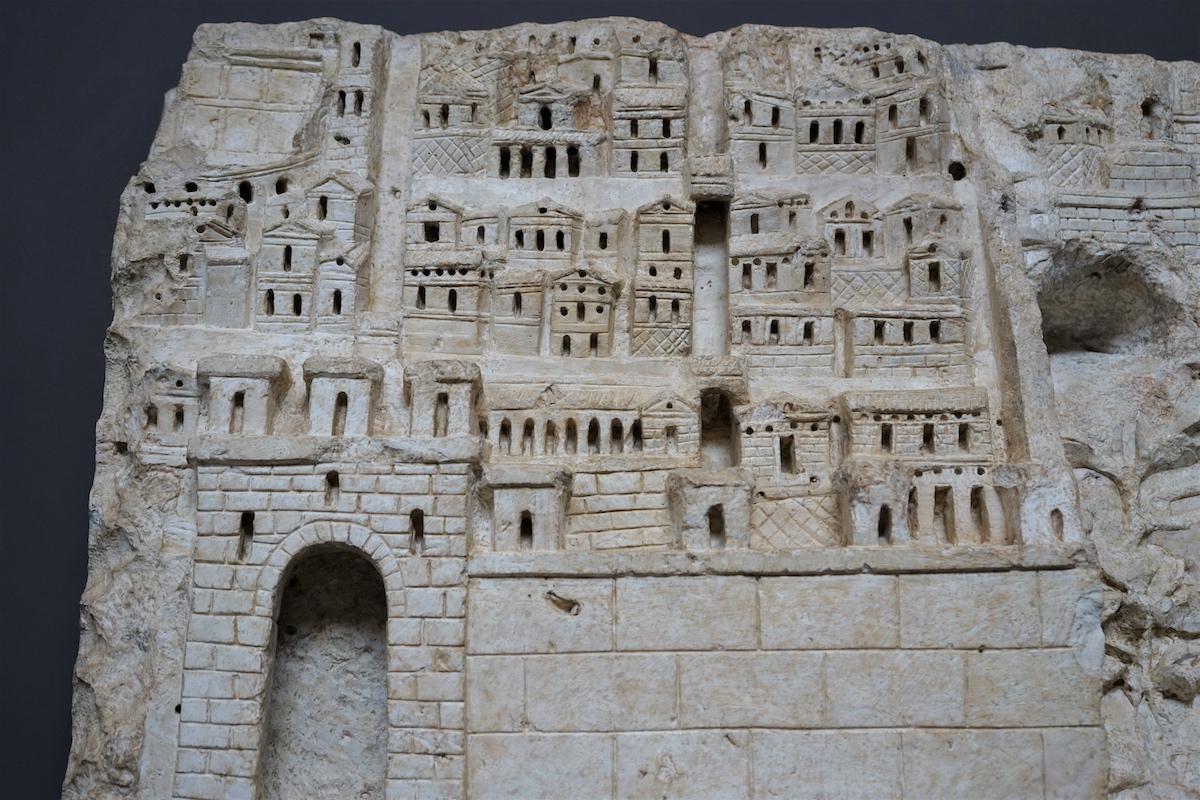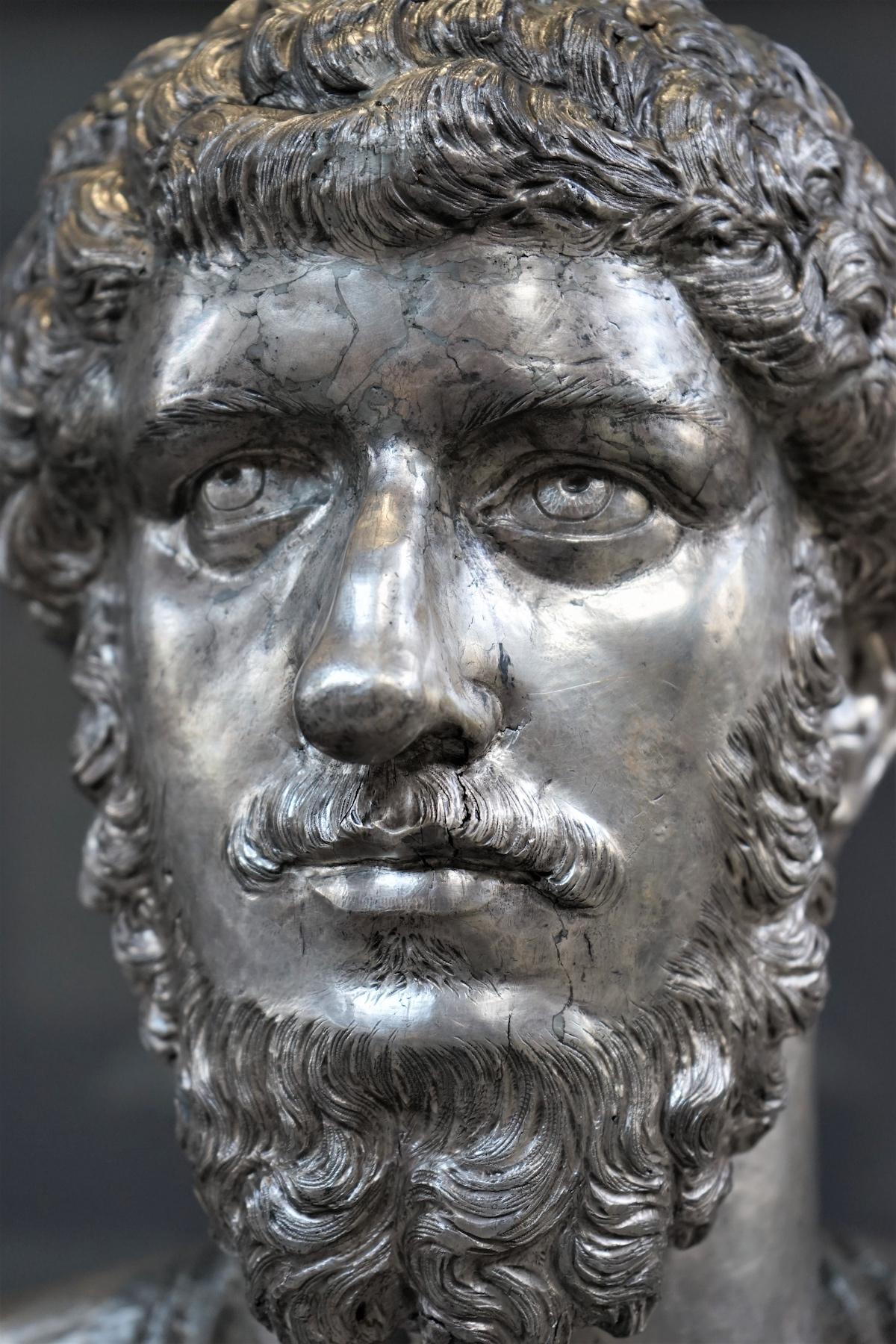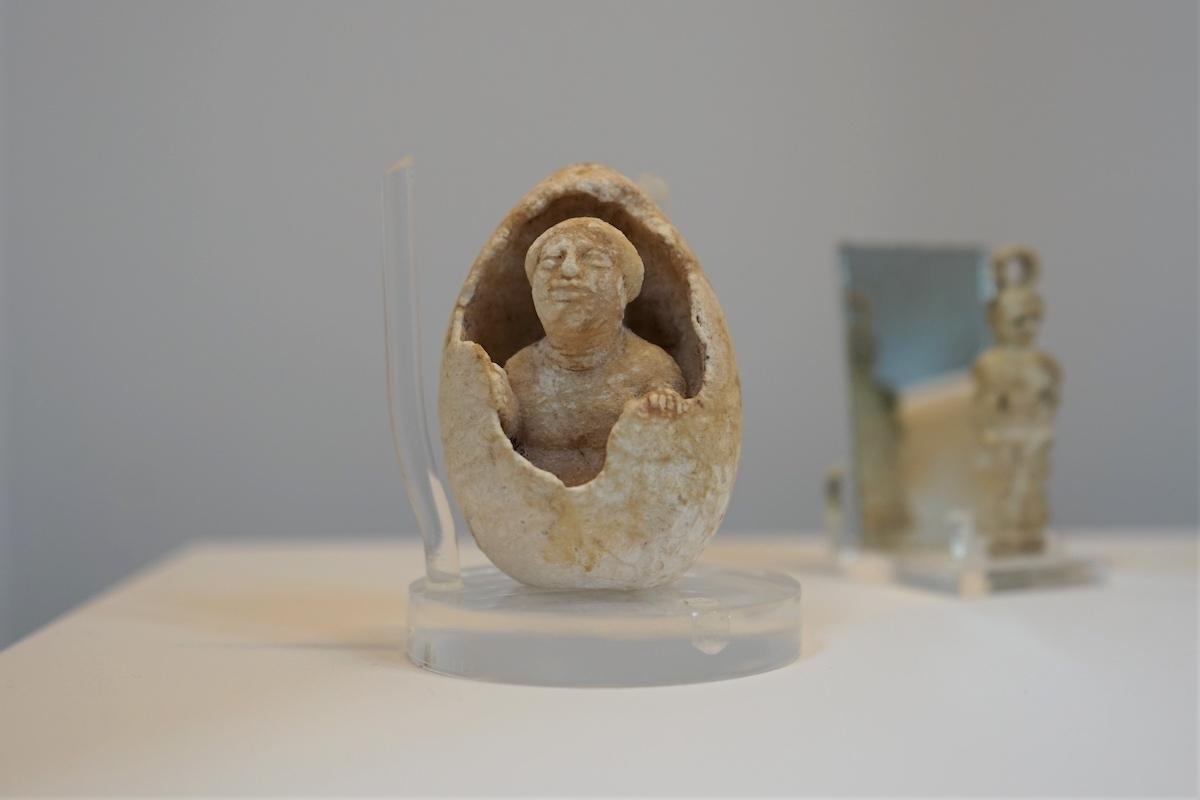This train of thought is prompted by the new exhibition at the ancient Baths of Diocletian in Rome. ‘The Instant and Eternity: between Us and the Ancients’ includes an array of superb pieces from the museum’s collection, paired with objects loaned from other Italian museums, as well as a number of important pieces from Greece.
The assemblage of objects is of the highest quality. There are exceptional marble statues and portrait busts not only from Italy but also from the islands of Delos and Santorini. From the latter, too, is an extraordinary, two and a half meter tall, archaic ‘Kore’ (female statue), which was discovered in 2000 but remained in storage until last year. There is a fourth-century BC gold ‘orphic tablet’ inscribed with an incantation to be read at the entrance to Hades, and a collection of precious silverware including the bust of the co-emperor Lucius Verus.




